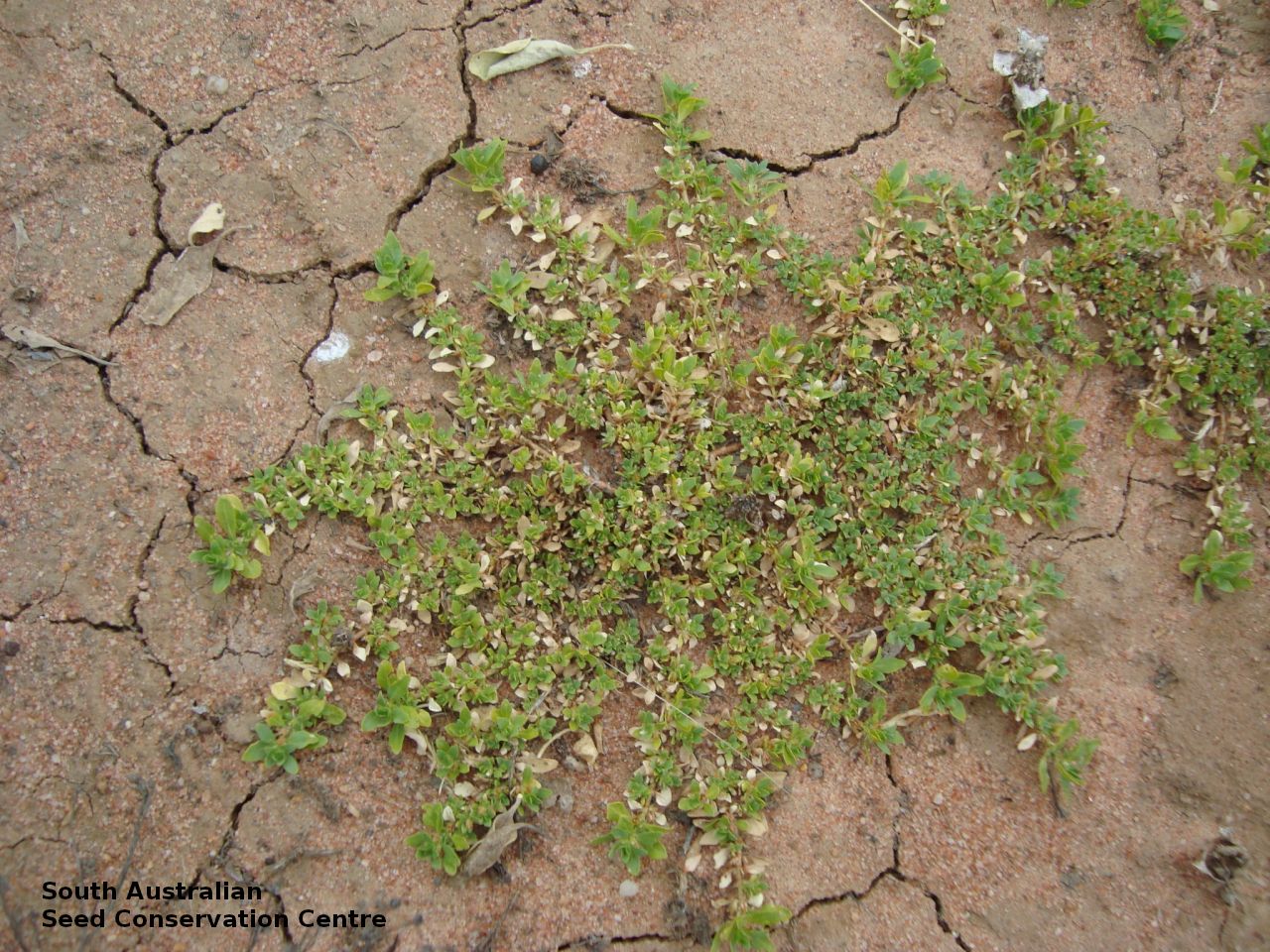
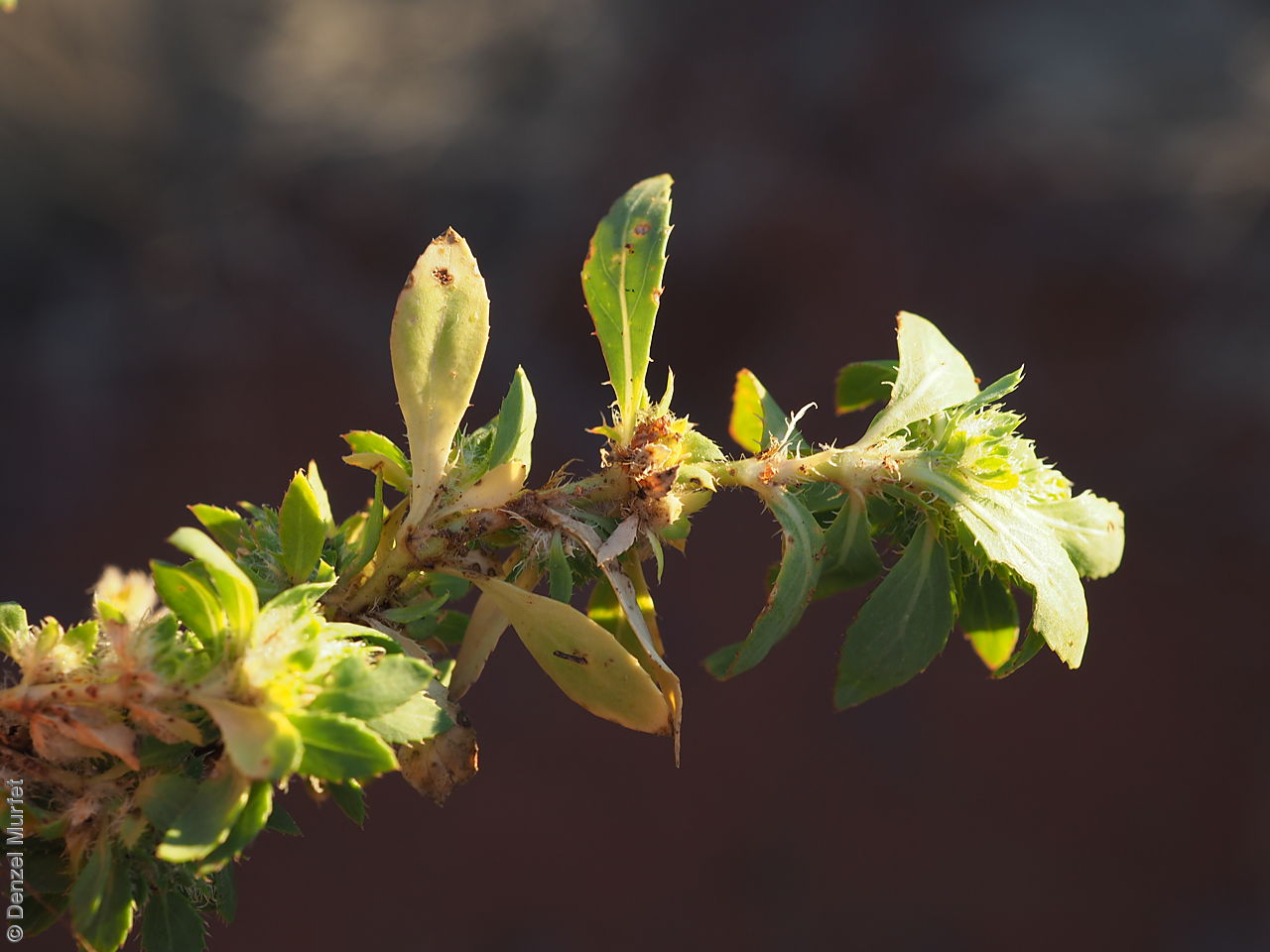
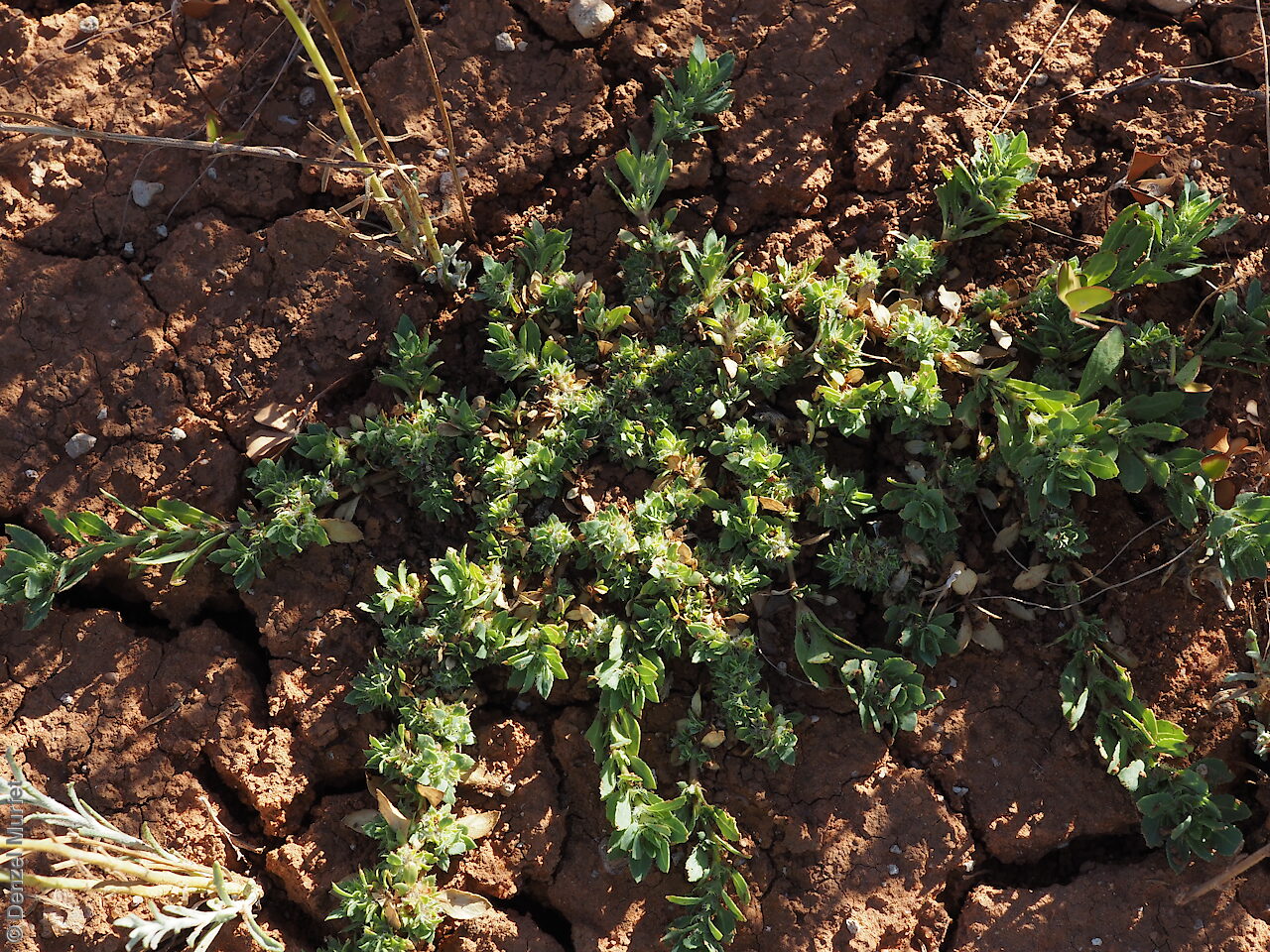

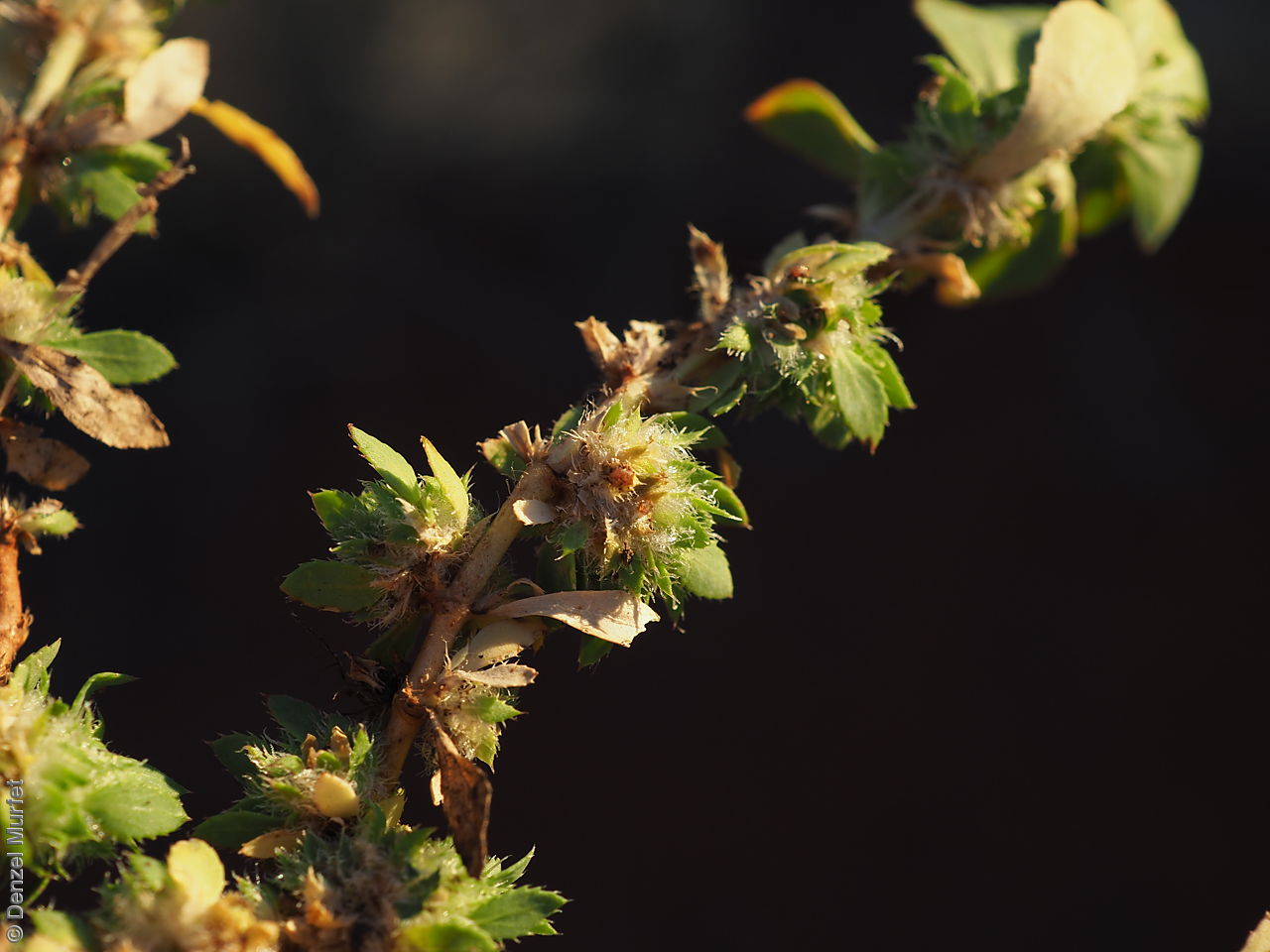
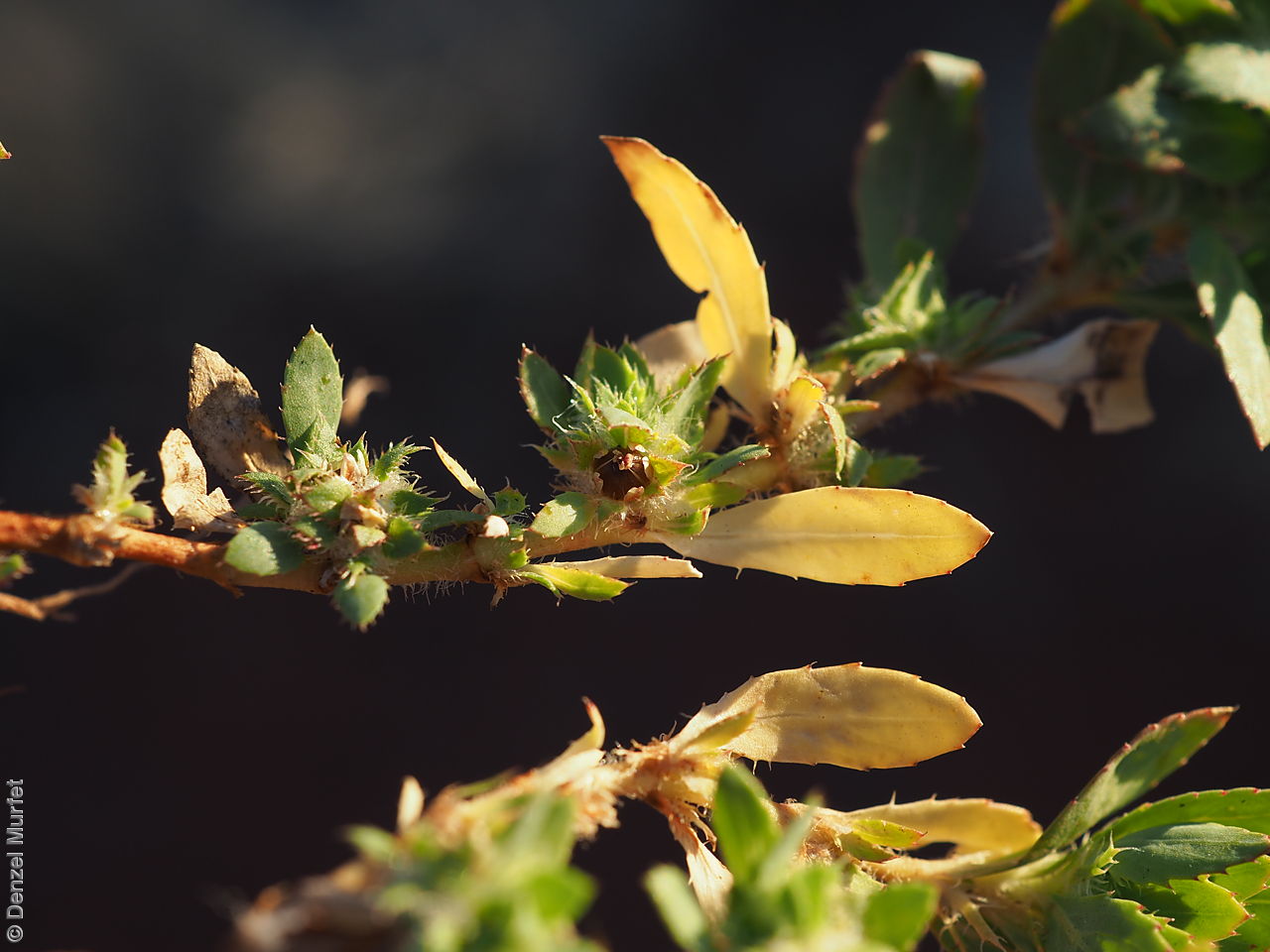

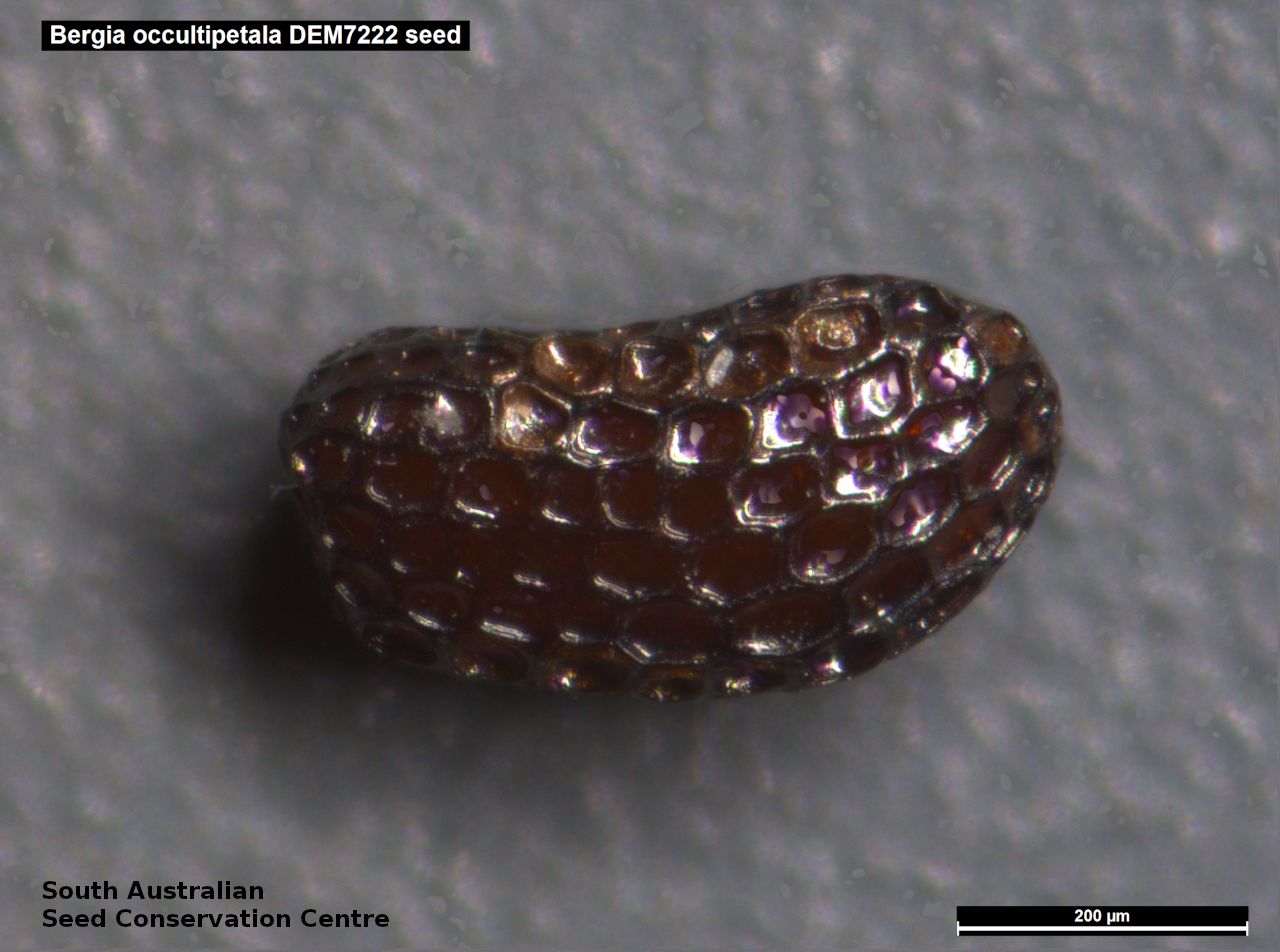
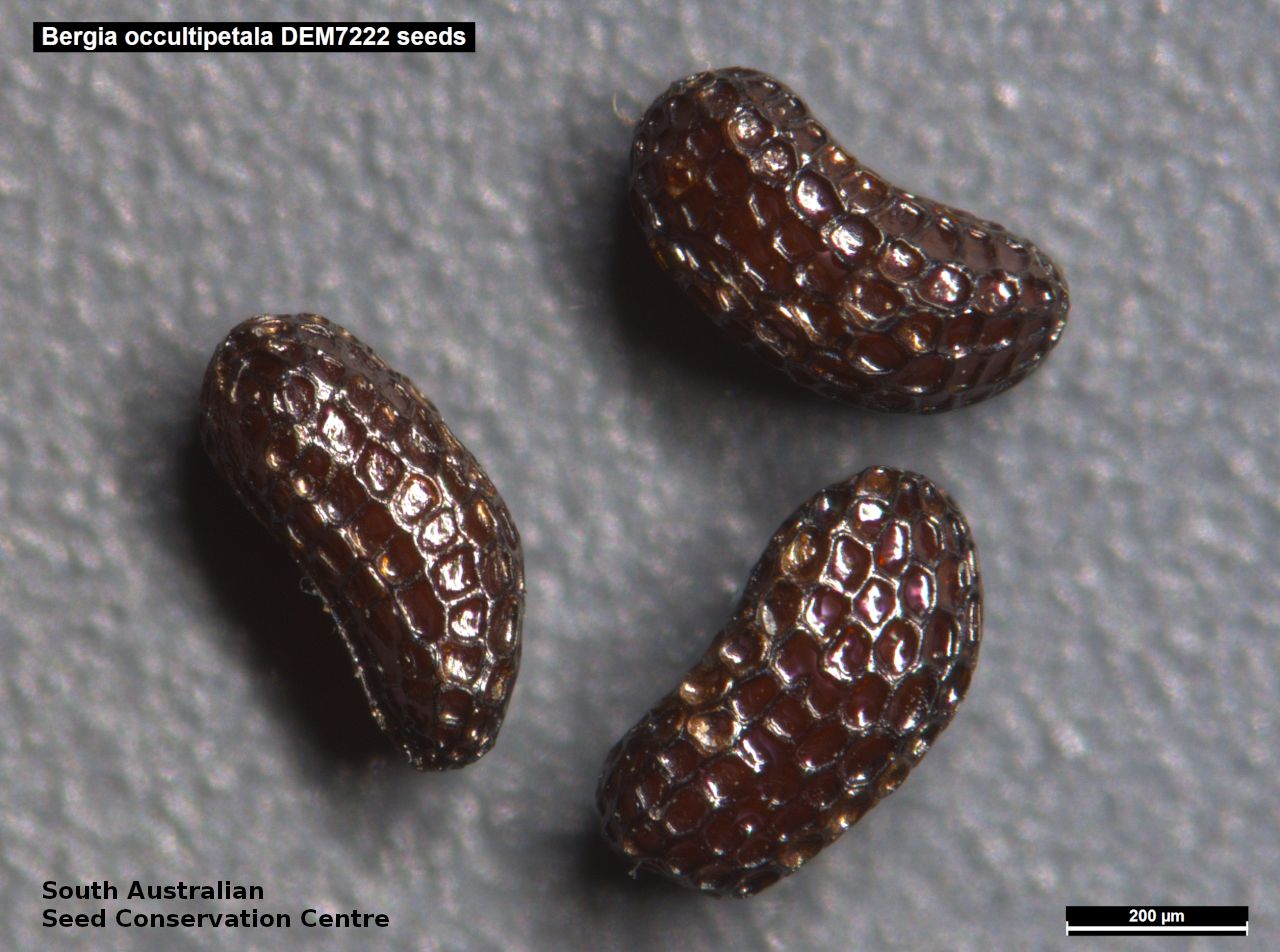
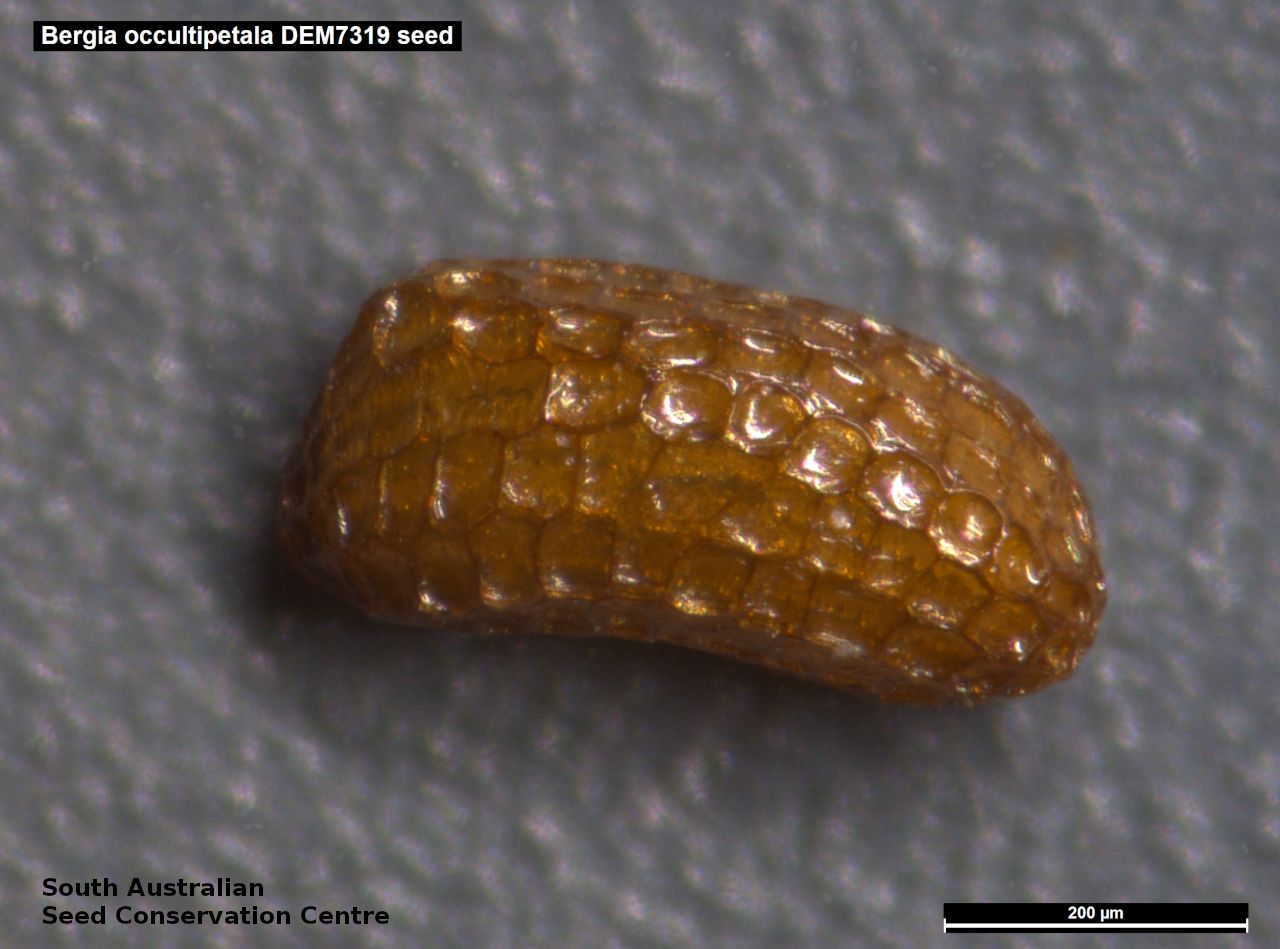
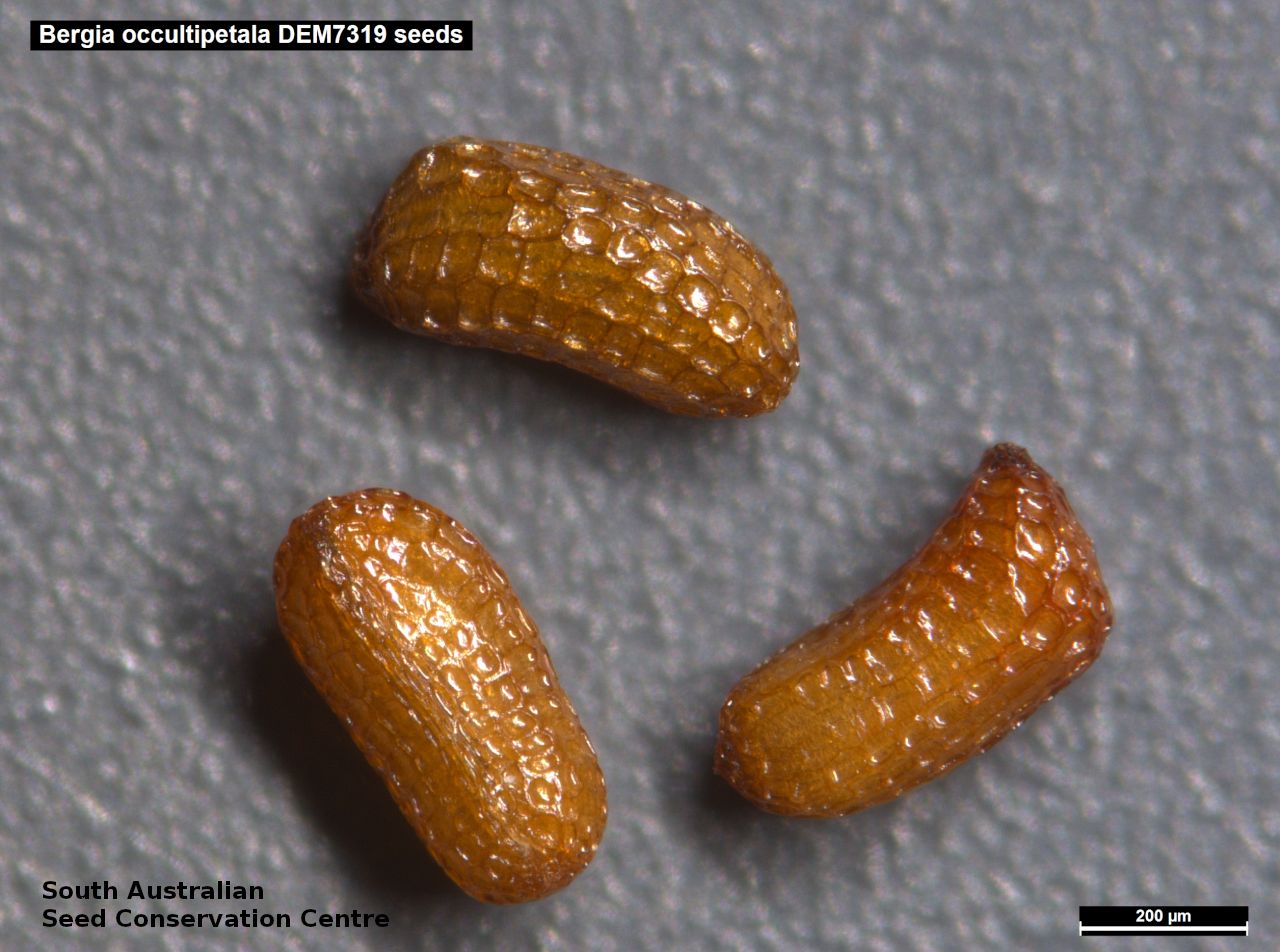


Etymology
Bergia named after Dr Petter Jonas Bergius (1730-90), Swedish physician and botanist. Occultipetala means having secret petals; referring to the petals which remain enclosed within the calyx.
Distribution and status
Found in the north central and north-eastern parts of South Australia, growing on sandy or clay soils on lower dune slopes and swamp margins. Also found in the Northern Territory, Queensland and New South Wales. Native. Common in South Australia. Uncommon in Queensland and New South Wales. Common in the Northern Territory.
Herbarium regions: North Western, Lake Eyre
NRM regions: Alinytjara Wilurara, South Australian Arid Lands
AVH map: SA distribution map (external link)
Plant description
Prostrate perennial. Indumentum of eglandular hairs. Leaves elliptic, to 25 mm long and 7.5 mm wide, acute, glabrous, margin serrate, mid-vein prominent, leaves on condensed axillary shoots smaller. Stipules to 3.5 mm long and 1.5 mm wide at base. Flowers solitary, sessile. Bracteoles appressed to calyx, to 4.5 long and 1.5 mm wide, acuminate, green, margin white, laciniate, sometimes separated as distinct auricles. Sepals 5, elliptic, to 4.5 mm long and 2 mm wide, acuminate, dimorphic with inner 2 sepals smaller, green, margin fimbriate, keel absent, pubescent externally on basal half with blunt, transparent, strap-like hairs to 0.7 mm long. Petals 5, narrow-obovate to spathulate, to 2.5 mm long and 0.9 mm wide, obtuse, shorter than sepals, enclosed within sepals at anthesis. Stamens 5, to 1.5 mm long, filament flattened, linear or narrowly dilated at base. Fruits are globular capsule to 2.5 mm diameter, 5- rarely 4-locular. Seed embryo type is linear.
Seed collection and propagation
Collect stems with maturing capsules, those that are fat, drying off and contain brown seeds. Place the stems in a tray and leave to dry for one to two weeks. Then rub the plant especially the capsules gently by hand to dislodge the seeds. Use a fine sieve to separate the unwanted material. Be very careful as the seeds are very small. Store the seeds with a desiccant such as dried silica beads or dry rice, in an air tight container in a cool and dry place.
| Location | No. of seeds (weight grams) | Number of plants | Date collected | Collection number Collection location | Date stored | % Viability | Storage temperature |
|---|---|---|---|---|---|---|---|
| MSB | 17,000 (0.6 g) | 20+ | 20-May-2007 | RJB72078 North Western |
Number of plants: This is the number of plants from which the seeds were collected.
Collection location: The Herbarium of South Australia's region name.
% Viability: Percentage of filled healthy seeds determined by a cut test or x-ray.